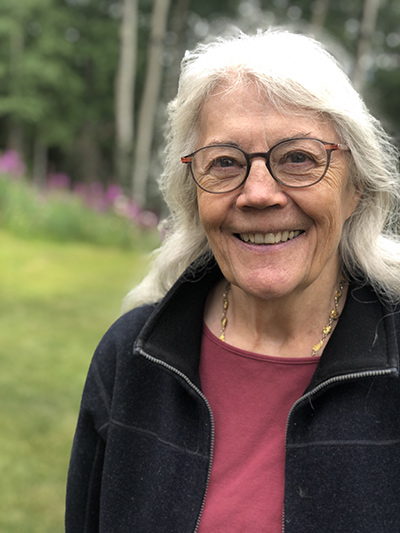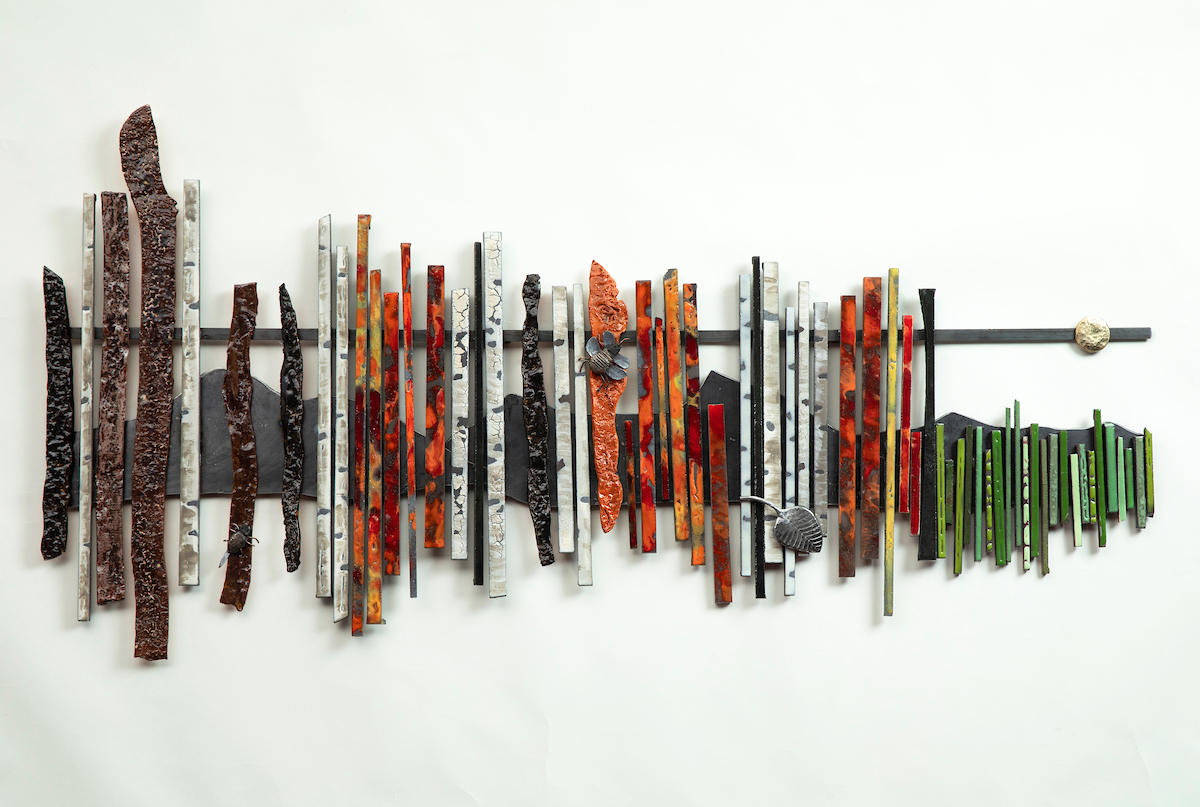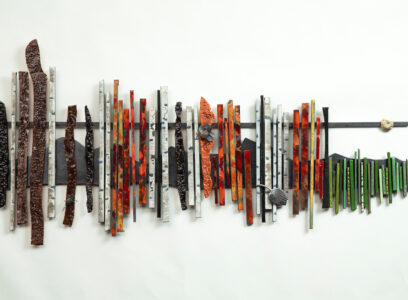Nancy D. Hausle-Johnson

Transition from Forest to Grassland
During an ITOC presentation to artists, scientist Brian Buma (University of Colorado, Denver) talked about the impact of climate change on the boreal forest. His words immediately inspired visual images in my mind and stuck with me for months. I emailed him several times, and he provided me with more information. He described how increasing fire frequency, due to climate warming, threatens the very existence of spruce forests. One such successional trajectory transforms a forest into grassland. If an immature forest has two closely spaced fires around 10 years apart, that may almost eliminate black spruce in that area. Historically, those short intervals did not happen often because recently burned areas are not very flammable. As the climate warms, however, conditions for burning are getting more extreme and areas of immature trees are burning. It only takes one instance of a fire sweeping over an area that was recently burned to transition a spruce forest into a grassland or a woodland of deciduous birch and aspen, the woodland itself vulnerable to fire and climate change.
Transition from Forest to Grassland depicts the timeline of transition, using shapes that infer trees and fire. The trees are brown strips of clay that have been pressed into spruce tree bark to make a textured surface. Fire is represented by multi-colored glazes on tile strips; grass is represented by green glazed tile strips. Brown tile strips on the left side of this piece represent the trunks of healthy spruce trees. Frequent cycles of fire are represented by variegated red, yellow, and orange tile strips. The forest transitions from left to right as the seasons pass. The number of spruce trees decreases; deciduous trees replace the spruce. Aspen, whose tree trunks are represented by gray strips, disappear due to climate change and insect stress, being replaced by the short green tile strips of the emerging grasslands.
Special thanks to Thomas Hart (Iron Amenities, Ester, Alaska).
Nancy D. Hausle-Johnson
Nancy D. Hausle-Johnson grew up in Seattle, Washington, and fell in love with outdoor activities including hiking, climbing, skiing, and outdoor education. Her experience as a fire lookout reinforced appreciation of wild spaces. Since moving to Fairbanks, Alaska, in 1980, she has applied her art in schools, businesses, and public spaces, designing and creating paintings and silkscreen prints, clay structures, and tile murals. Since 1985, she has designed art tiles and murals for art shows, public and private commissions and 1% for art commissions, hospitals, libraries, schools, and sports areas, using images inspired by birds, animals, flowers, and Alaskan landscapes.
Website: alaskatileart.com


